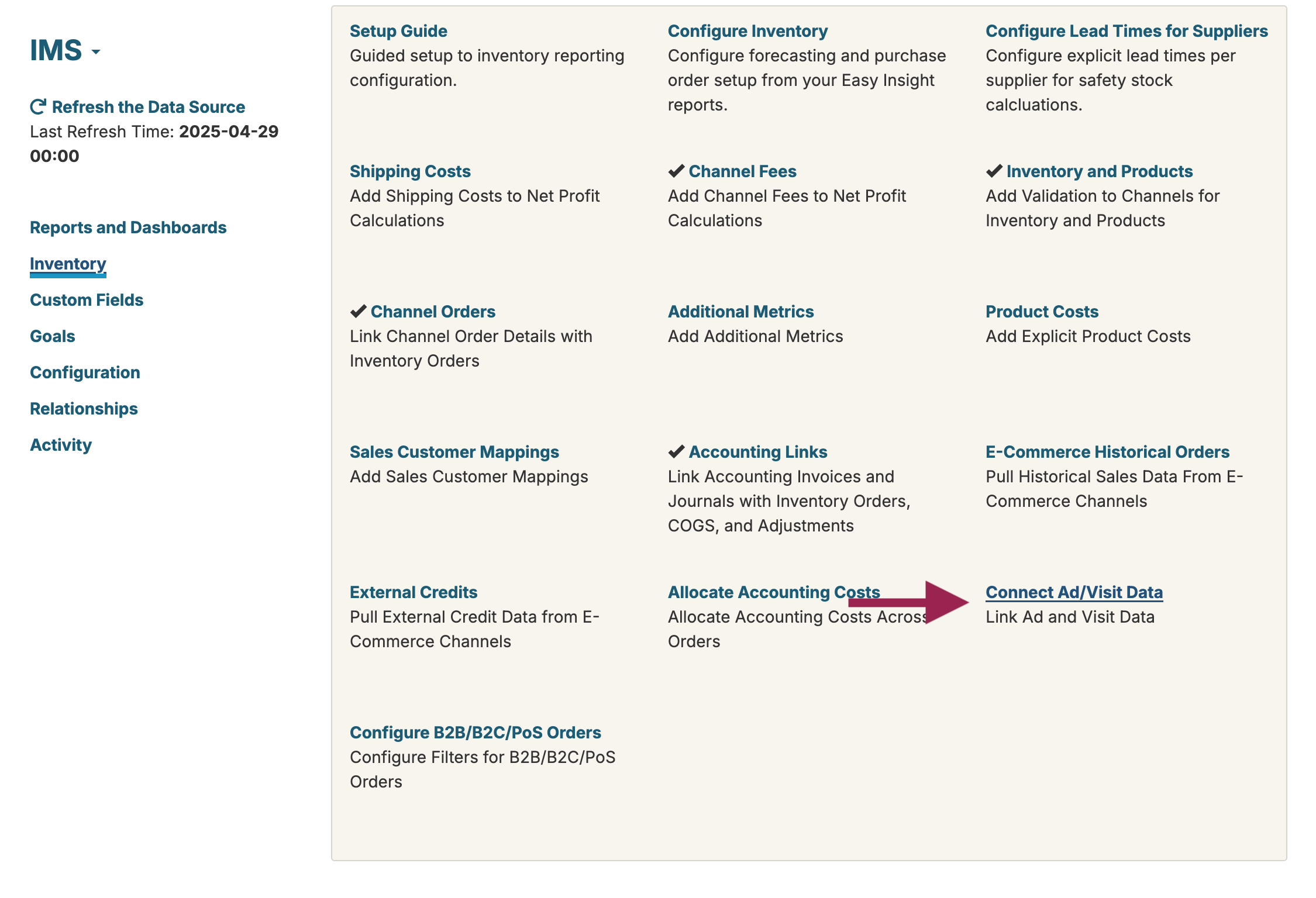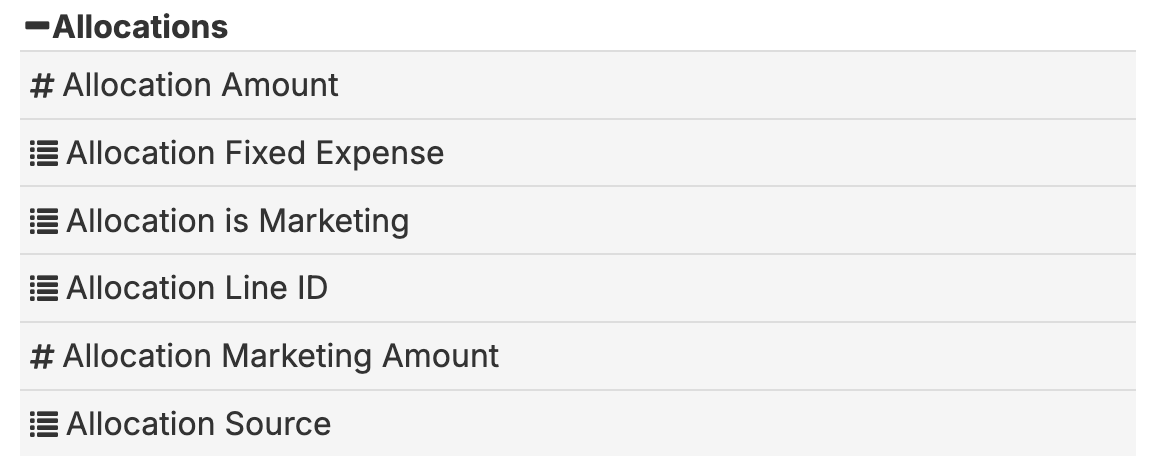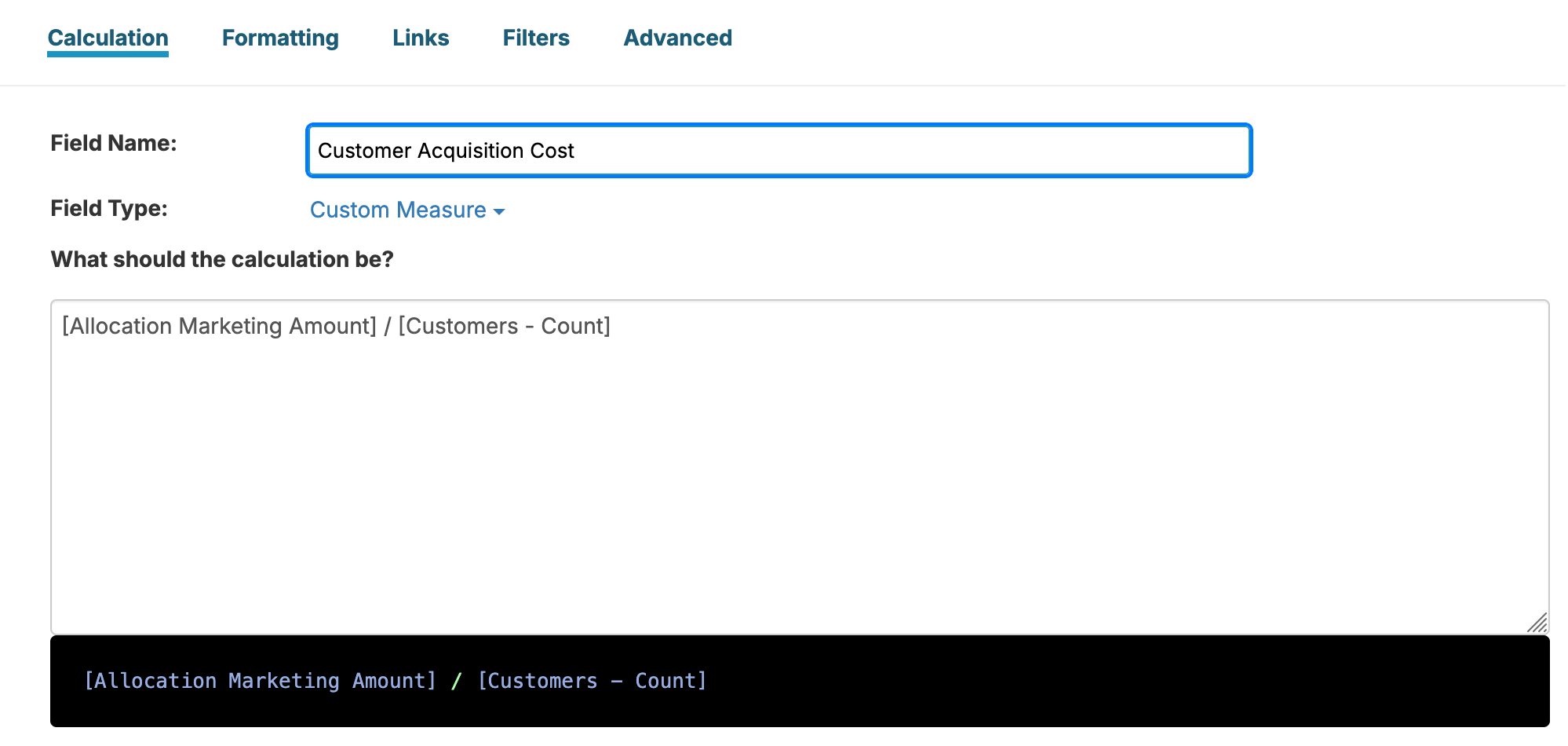You can integrate your marketing spend from Google Analytics, Meta, and Amazon Ads and combine the spend from those systems with the sales data from your e-commerce and inventory systems to help calculate metrics like:
To get started, connect your marketing systems through adding data sources. Next, go to the Inventory section of your inventory data source and do 'Connect Ad and Visit Data':

You can enable each marketing source from this screen. For each marketing source, you can set a filter to define which sales will map to which marketing sources. For example, you can create a filter on the Source field from your inventory system to only associate Amazon Ads data with your Amazon sales and to only associate Google Ad and Meta spend with your Shopify sales:

After making changes to your configuration, save and refresh your data source. When the refresh runs, it will allocate your marketing spend per order using the filters you configured. Your marketing spend will go into the 'Allocations' folder on your data source:

Since the marketing cost is allocated per order, you can seamlessly use it in reports--for example, creating a report for sales and marketing by source, and use these metrics together to calculate marketing efficiency ratio by channel:

For customer acquisition cost, the trick is that you're comparing two different dates--you have the number of new customers based on first order date and you have the marketing spend based on order date. To create a report combining the two, you'll need to Set up Date Comparisons through Quick Actions on your report:

From here, you can create a calculation using the two metrics to determine how much it's costing you in marketing to pull in new customers:

If you're not pulling customer information into your inventory management system (for example, batching your Amazon/Shopify orders or just mapping them to a single Amazon/Shopify customer), you can load the customer data in from your e-commerce integrations. For more information, see Customer Analytics.